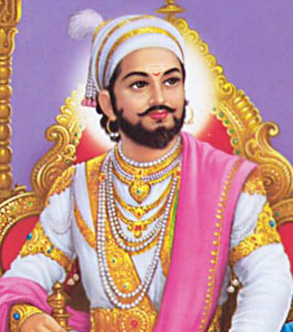 The Maratha Empire was ruled by the important figures that brought a huge change in the history of Marathas and made significant changes in the social, cultural and economical set up of the then society as well.
The Maratha Empire was ruled by the important figures that brought a huge change in the history of Marathas and made significant changes in the social, cultural and economical set up of the then society as well.
The founder of the Maratha Empire was the most popular figure of the Maratha history, Shivaji. Being the son of Jijabai and Shahji Bhonsle, Shivaji spent his formative years under the care and guidance of his mother and senior guardian, Dadaji Khonddev.
At the age of nineteen, Shivaji took initiative to expand the Maratha Empire. He seized the hill-fort of Torna, near Pune and constructed the fort of Rajgarh, Kondana and Purandhar. After attacking the Mughal districts of Ahmednagar and Junnar, Shivaji got involved into dissension with the Mughals for the first time in 1657. Afterwards, the energetic Shivaji extended his sway to the North Konkan and conquered upto Mahad in the south. During the reigning period of Shivaji, the Maratha Empire saw the zenith of success in terms of all the social and cultural aspects.
To lead the Maratha Empire with accuracy, Shivaji established a competent civil rule with the help of well regulated and disciplined military and well structured administrative organizations. He also was the innovator of the rules of military engagement of that era. He was the initiator of Ganimi Kava (in Marathi), or guerrilla tactics, which furnished various factors like demographics, speed, surprise and focused attack. Even the reigning period of Shivaji was the period of religious development. As Shivaji himself was a devout person; he also had respect for all other religions. He took initiatives to protect the mosques and Muslim tombs and as he had respect for the Sufi tradition of Islam.
After Shivaji, his eldest son, Sambhaji Raje Bhonsle succeeded him as the Chhatrapati or the High Protector of the Maratha Empire. Most competent person to lead the Maratha Empire, Shambhaji was a good warrior and had the intelligence to escape from any critical situation. He also took proper initiatives to keep the Mughal forces at bay.
After Shambhaji, the next to glorify the throne was Rajaram, the brother to Chattrapati Sambhaji. At the time of his ruling period, the Mughals laid siege to Raigad and Rajaram flew to Vishalgad and then to Jinji to secure himself. The Marathas raided the Mughal territory from there and the Maratha commanders Santaji Ghorpade and Dhanaji Jadhav captured many forts. The treaty of Rajaram was rejected by the emperor in 1697. After the death of Rajaram in 1700 at Sinhagad, his widow, Tarabai, assumed control in the name of her son Ramaraja (Shivaji II). Tarabai heroically led the Maratha army against the Mughal power to save the Maratha Empire. The battle of Malwa was a significant battle for the Maratha Empire and the Mughals lost their eminent position on the Indian subcontinent forever. Later the subsequent Mughal Emperors became titular kings and the Marathas emerged triumphant after a strong battle. The victory also set the foundations for the imperial conquests achieved later, under the Peshwas.
The next emperor of the Maratha Empire was Shahu who was the son of Sambhaji and grandson of Shivaji. Shahu was the one among the Marathas who controlled the largest territory with the support and help of Raghuji Bhonsale Nagpurkar, Shinde, Bajirao Bhat Peshwe, Bhaskar Ram, Holkar, Gaikwad, Nanasaheb Peshwe who were his renowned sardars. He annexed Maharashtra, Karnataka, Vidarbha, Gujrat, Malwa, Madhya Pradesh, Chhatisgarh, Tamilnadu up to Tanjavur (Tanjore), Orissa, Jharkhand, Bihar (where he has Chauthai rights), West Bengal along with East Bengal up to Chitgaon (where he had chauthai and sardeshmukhi rights) in his territory prior to the independence he could not rule some places of India due to the Mughal prominence in those areas.
The Maratha emperors ruled India for a considerable amount of time and during each ruler some changes were made in the social, economical and cultural side of the society.



















